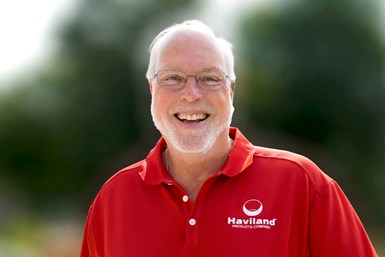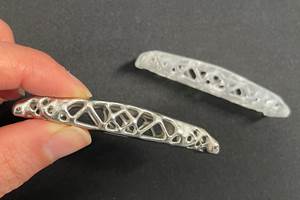Attention to Measurement
English vs. Metric — which should you use? Ron Kinne of Haviland Enterprises Inc. explains why you need a firm understanding of both for measuring various aspects of plating processes.
Q: Why does it seem like everyone is constantly switching between standard and metric measurements? Can’t we just pick one and use it everywhere?
A: In electroplating processes, the first choice between Metric and English units often depends on the location of the plating company and the industry standards followed in that region. For example, in North America, companies generally use the English system, while in Europe and many other parts of the world, the Metric system is more common. Some industries, such as aerospace and automotive, have established specific standards that require the use of one system or the other.
After that, when it comes to measuring plating parameters more specifically, certain units are more commonly used for specific parameters. Current density, for example, is typically measured in amperes per square foot (ASF) in the English system and amperes per square decimeter (ASD) in the Metric system. Other parameters, such as plating thickness, are commonly expressed in units of mils (thousandths of an inch) in the English system or micrometers (millionths of a meter) in the Metric system.
Bath temperature is another parameter that is commonly measured in electroplating processes, and the units used for this parameter vary by system. In the English system, temperature is typically measured in degrees Fahrenheit (°F), while in the Metric system, it is measured in degrees Celsius (°C). Conversion between these units is straightforward: to convert Fahrenheit to Celsius, subtract 32 from the Fahrenheit temperature and multiply the result by 5/9. To convert Celsius to Fahrenheit, multiply the Celsius temperature by 9/5 and add 32.
When it comes to expressing the concentration of specific substances in plating baths, the units used can vary. For example, the concentration of sulfuric acid in a plating bath may be expressed in grams per liter (g/L) or ounces per gallon (oz/gal), depending on the preference of the plating company or the industry standard in the region. To convert from oz/gal to g/l you multiply by 7.5, or if going from g/l to oz/gal, you divide by 7.5. Other substances commonly used in plating baths, such as nickel, copper, and gold, may be expressed in units of parts per million (ppm), grams per liter (g/L), or ounces per gallon (oz/gal), depending on the situation.
Adding substances to a plating bath requires careful calculation of the amount of material needed, based on the desired concentration, the volume of the bath, and the concentration of the material being added. In many cases, conversion factors must be used to convert between Metric and English units. For example, if a technician needs to add 10 ppm of a substance to a 500-gallon plating bath, they must first calculate the amount of substance needed in grams per liter or ounces per gallon, and then convert that amount to the appropriate unit. Conversion tables or calculators are often used to simplify this process.
A common issue that arises in plating facilities is how additions are made. Typically, recommendations for additions are made by people in an analytical lab either on sight or based on samples sent out to outside labs. The recommended additions may be in English or Metric, but once it gets communicated to the solution maintenance personnel on the line, it can morph into almost anything. For example, a lab could call for a 10-pound or 5-kilogram addition. This can change once it reaches the production floor into 2-3 scoops, ½ a bucket, or a partial bag. A 3-ounce add can change into 85 milliliters, a pint, ½ a coffee cup, or to just enough to cover the bottom of a 5-gallon bucket. It cannot be stressed enough that when making adds to your plating process, the additions be made accurately. Scales and graduated measuring containers of the appropriate sizes are essential. Having dedicated pumps, pails, and scoops for each chemical of the right size for each chemical in a plating facility is a very small cost compared to the potential problems that incorrect or contaminated adds can cause.
In conclusion, the units used in electroplating processes vary depending on the location of the plating company, the industry standards followed in that region, or simply what is easiest for the “thing” being measured. It is important that technicians are familiar with both Metric and English units to properly measure and adjust plating parameters and then must carefully calculate the amount of material needed when adding substances to plating baths. This requires both knowledge of the relevant conversion factors and the ability to use conversion tables or calculators when necessary.
About the Author

Ron Kinne
Ron Kinne is a technical sales manager for Haviland Enterprises Inc. Visit havilandusa.com.
Related Content
Nanotechnology Start-up Develops Gold Plating Replacement
Ag-Nano System LLC introduces a new method of electroplating based on golden silver nanoparticles aimed at replacing gold plating used in electrical circuits.
Read MoreAn Overview of Electroless Nickel Plating
By definition, electroless plating is metal deposition by a controlled chemical reaction.
Read MoreProducts Finishing Reveals 2024 Qualifying Top Shops
PF reveals the qualifying shops in its annual Top Shops Benchmarking Survey — a program designed to offer shops insights into their overall performance in the industry.
Read MorePossibilities From Electroplating 3D Printed Plastic Parts
Adding layers of nickel or copper to 3D printed polymer can impart desired properties such as electrical conductivity, EMI shielding, abrasion resistance and improved strength — approaching and even exceeding 3D printed metal, according to RePliForm.
Read MoreRead Next
How to Choose the Right Coating for Fasteners
Choosing the proper coating for fasteners can help with performance by improving durability and lifespan. In this helpful Ask the Expert article, Mark Schario of Columbia Chemical offers advice for choosing the right fastener coatings.
Read MoreElectroplating for Medical Devices
Brittany McKinney of Pavco Inc. discusses the benefits of electroplating for medical devices.
Read More










.jpg;maxWidth=300;quality=90)








